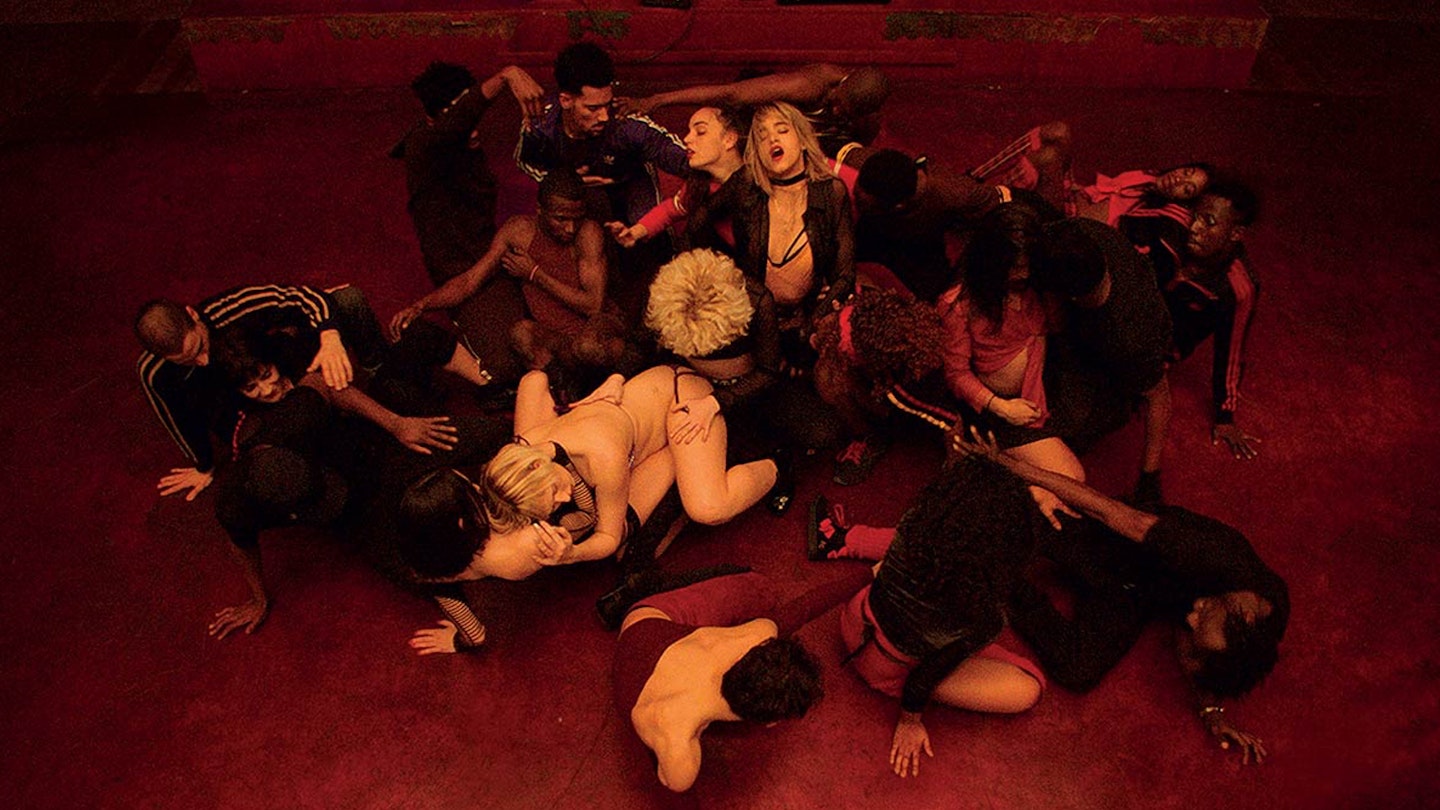“God is with us!” crows Sofia Boutella’s Selva, arm in the air like Liberty Leading The People, early in the new Gaspar Noé film. If she’s right — and subsequent events suggest otherwise — the relevant deity is a vengeful, mischievous type who torments a dance troupe for its own amusement. From the fuzzy, VHS-style opening and the overheard shot of a bloodied woman struggling through deep snow (the only outdoor shot in the film), it’s clear Noé’s latest is another gore-soaked trip through our darkest impulses.

The film literally lines up its influences on the bookshelves that surround a fuzzy television set just after the film begins. There are VHS copies of Suspiria, Un Chien Andalou, Salò and Harakiri, and books by Nietzsche and on Taxi Driver, Murnau and Fritz Lang. Brace yourselves, in other words. On the TV we see clips of hopeful young dancers introducing themselves to the unseen heads of a dance company planning a new tour. They describe their love of the art (total), their attitudes to drugs (flexible), and one particularly beautiful young man is propositioned by the unseen boss (“What would you be willing to do...?”).
The twisted, entangled forms of the dancers recall Hieronymus Bosch’s hellscapes.
Cut to the dance studio, where the troupe runs through their planned performance. The dance style is athletic and street-based, impressive but hinting at darker themes. Many of the dancers are apparently double-jointed, specialising in body-distorting feats, and there are moves that smack of sexual aggression. The twisted, entangled forms recall, not for the last time in this film, Hieronymus Bosch’s hellscapes. So when someone spikes the punch and minor grudges turn into major clashes, it comes as no surprise.
What follows is dark, twisted madness. In long, dizzying takes, sometimes tipping the camera entirely upside down or following a character into writhing, screaming madness, Noé revels
in the fallout. What happens when all the inhibitions are shed? All these lithe, young bodies crash together in violence and (remarkably unsexy) sex, and the close harmony in which they danced falls apart.
It’s barely a plot, and for all its obvious imagery (a glittery French flag behind the DJ, all those bookcases filled with allusion), Noé doesn’t make anything so obvious as a clear political point. There may be a deliberate contrast between the breathtakingly sexist and sexually aggressive banter between the men at the party and the fact that it’s the women who cause most of the havoc here. Perhaps it’s a specifically French commentary, given the repeated imprecations to showcase the best of French dance and the claim that they are “French, and proud to be so”. But as the dancers tear themselves apart, screaming into the void and throwing themselves bodily into madness, maybe it’s simply saying that the ties that bind civilisation together are more fragile than we think, and that chaos always hovers just below the surface.
